Heliophysics and Planetary Science Archive
Marshall Scientists Featured in New "Science Never Stops" Video Series
Marshall scientists are supporting the U. S. Space and Rocket Center's (USSRC’s) new video series aimed at 10-14 year-olds called “Science Never Stops”. Videos are posted on Facebook and YouTube. ST13 scientists contributing to the video series are Dennis Gallagher, Mitzi Adam, Sabrina Savage, and Heidi Haviland. Marshall Chief Scientist and former ST13 Branch Chief, Renee Weber, is also participating.
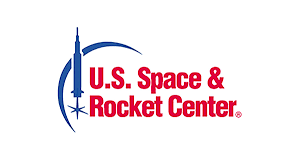
Dennis Gallagher gave a short interview with Mr. Joseph Vick with the USSRC. The Center has started to do these video interviews with the intent to edit them down to maybe 10 minutes each as part of a stay-at-home series or what kind of reach it will have.
Heidi Haviland also participated in the virtual outreach event, highlighting scientists working on research during the COVID restrictions. The interviews will air on the USSRC’s Facebook page and website following completion of the video publishing.
To view the interviews, visit: http://rocketcenter.com/scienceneverstops.
Proposal to Study Crater Population on Ceres Accepted for Funding
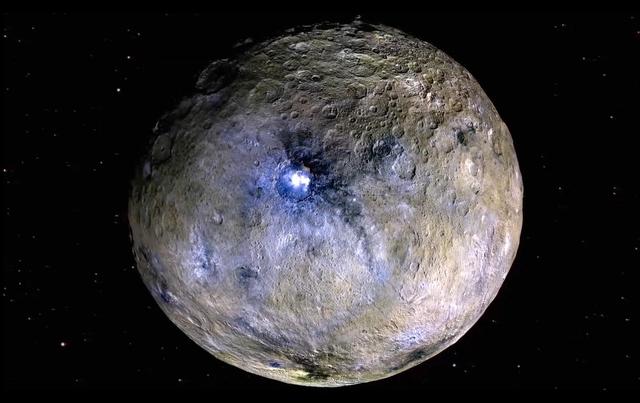
Debra Needham and Caleb Fassett are Co-Investigators on a proposal that was recently selected for funding by the Discovery Data Analysis Program, or DDAP. The proposal is entitled, "Planetary forensics for the case of Ceres: Where are missing small craters?". This proposal was led by Toshi Hirabayashi, professor at Auburn University.
Ceres is the largest object in the asteroid belt and generally classified as a Dwarf Planet; it’s icy/silicate surface and crater population has been modified in ways that remain to be fully understood. Ceres was explored from 2015-2018 by the Dawn mission.
Paper Accepted for Publication in the Journal of Geophysical Research-Planets
Caleb Fassett is a co-author on a paper accepted for publication in Journal of Geophysical Research-Planets entitled “Re-examination of the population, stratigraphy, and sequence of mercurian basins: Implications for Mercury´s early impact history and comparison with the Moon”. The work is led by Csilla Orgel.
He also participated in a local volunteer effort to 3D print PPE for local hospitals and organizations, delivering 22 mask frames as part of the more than 3700 that the Huntsville community produced. See https://huntsvillefightingcovid.com for more information.
Marshall Scientist Featured on Television Program
Marshall Scientist, Dr. Amy Winebarger, was featured on the CBS Saturday morning show, Mission Unstoppable with Miranda Cosgrove. The television program profiles female scientists and engineers and is geared to middle school students with the goal of increasing diversity in STEM careers. The episode featured Dr. Winebarger at White Sands, New Mexico for the Extreme ultraviolet Snapshot Imaging Spectrograph, or ESIS, sounding rocket launch. The show aired on April 4th and is currently available to view on the CBS website (Season 1, Episode 16). Dr. Winebarger’s participation in the program is an example of NASA and Marshall’s commitment to encouraging girls to consider STEM careers.
To view a clip of the episode, go to https://twitter.com/i/status/1246090357533745152 and to view the full episode, go to https://www.cbs.com/shows/mission-unstoppable/.
The ESIS mission team, led by Dr. Charles Kankelborg, space physicist at Montana State University, reported that the sounding rocket successfully launched at 2:04 p.m. EDT, September 30, from the White Sands Missile Range in New Mexico, ESIS flew to an altitude of 153 miles before descending by parachute and was recovered. The science team reports that “beautiful data” was received from ESIS.
ESIS’s 15-minute flight above Earth’s atmosphere observed eruptions in a layer of the Sun called the transition region. By watching subtle shifts in light, ESIS will have traced these explosions back to their source. The goal is to assess if they bloom from a single point, or instead shoot from many disconnected locations.
To find out more about ESIS, go to https://www.nasa.gov/feature/goddard/2019/rocket-team-are-solar-eruptions-messy-or-neat.
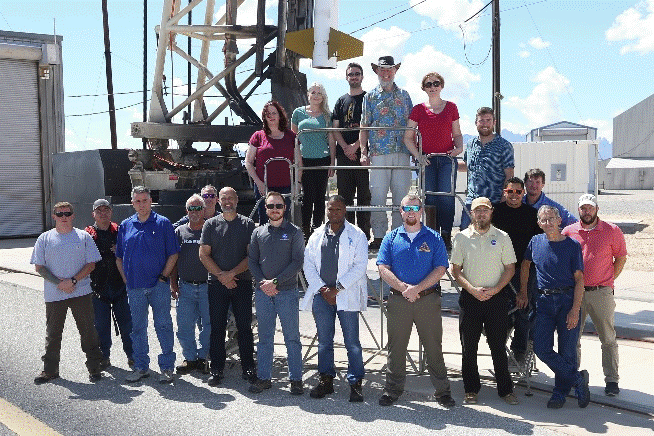
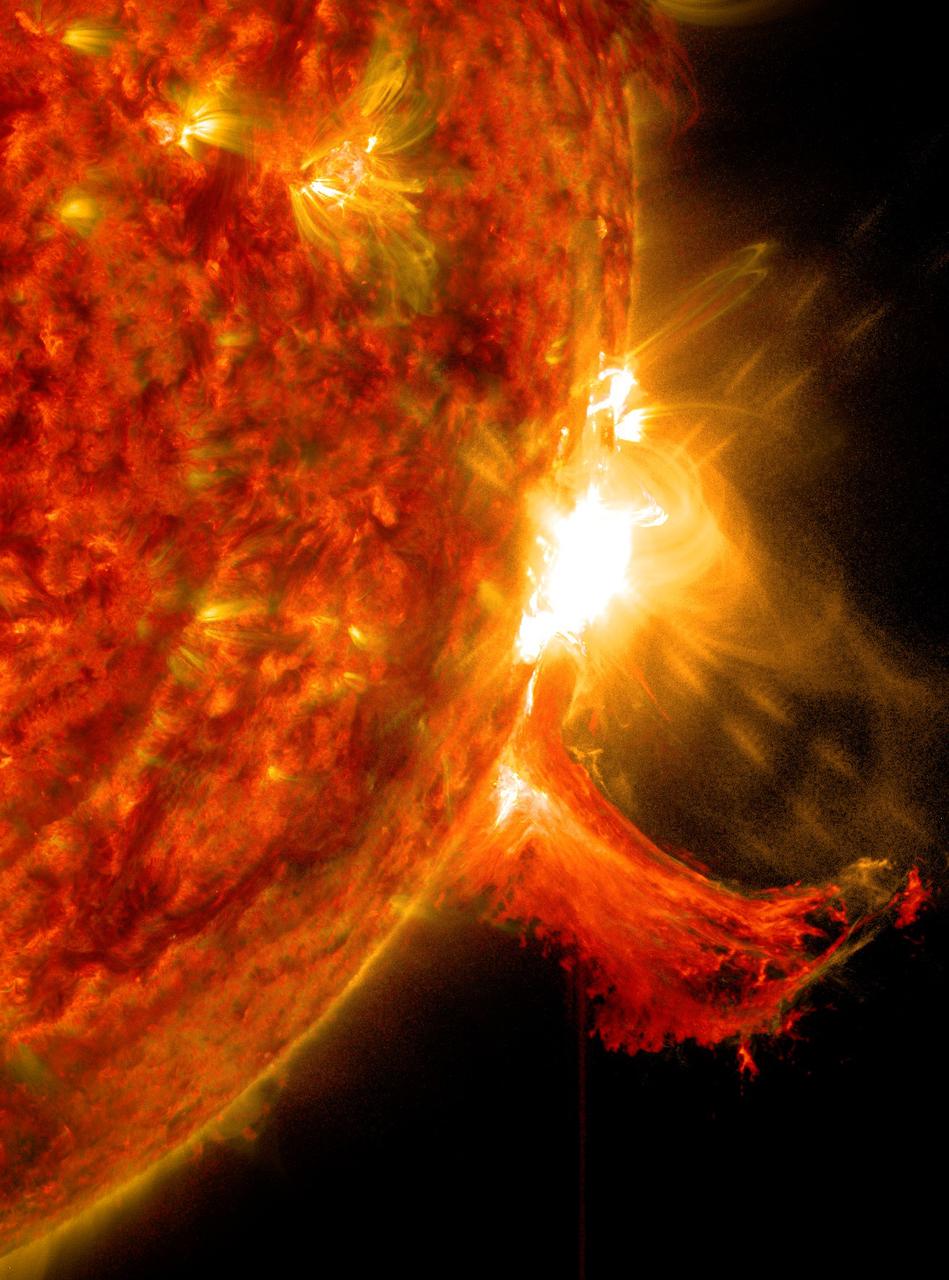
David McKenzie Selected as Heliophysics and Planetary Science Branch Chief
David McKenzie has over 25 years of experience in Heliophysics research and team leadership, especially with space-based X-ray and extreme-ultraviolet telescopes. He received his MS and PhD from the University of Delaware, for studies of the heating processes in the outer atmospheres (the coronae) of magnetically active stars including the Sun. David joined the faculty of Montana State University (MSU), first as a postdoctoral researcher, and later as Research Professor (Full). After 19 years at MSU, David joined the Heliophysics and Planetary Science Branch at NASA’s Marshall Space Flight Center in 2016. He is lead or co-author on more than 65 refereed publications and is nationally and internationally recognized for his research on solar flares, turbulence in magnetized plasma, and magnetic reconnection. David has led teams performing the mission operations and data analysis for missions including Yohkoh, TRACE, and Hinode; at MSFC, David is PI of the Chromospheric LAyer Spectro-Polarimeter (CLASP2), a sounding rocket project involving 11 institutions in 8 countries to measure the magnetic field in the atmosphere of the Sun using ultraviolet spectropolarimetry.
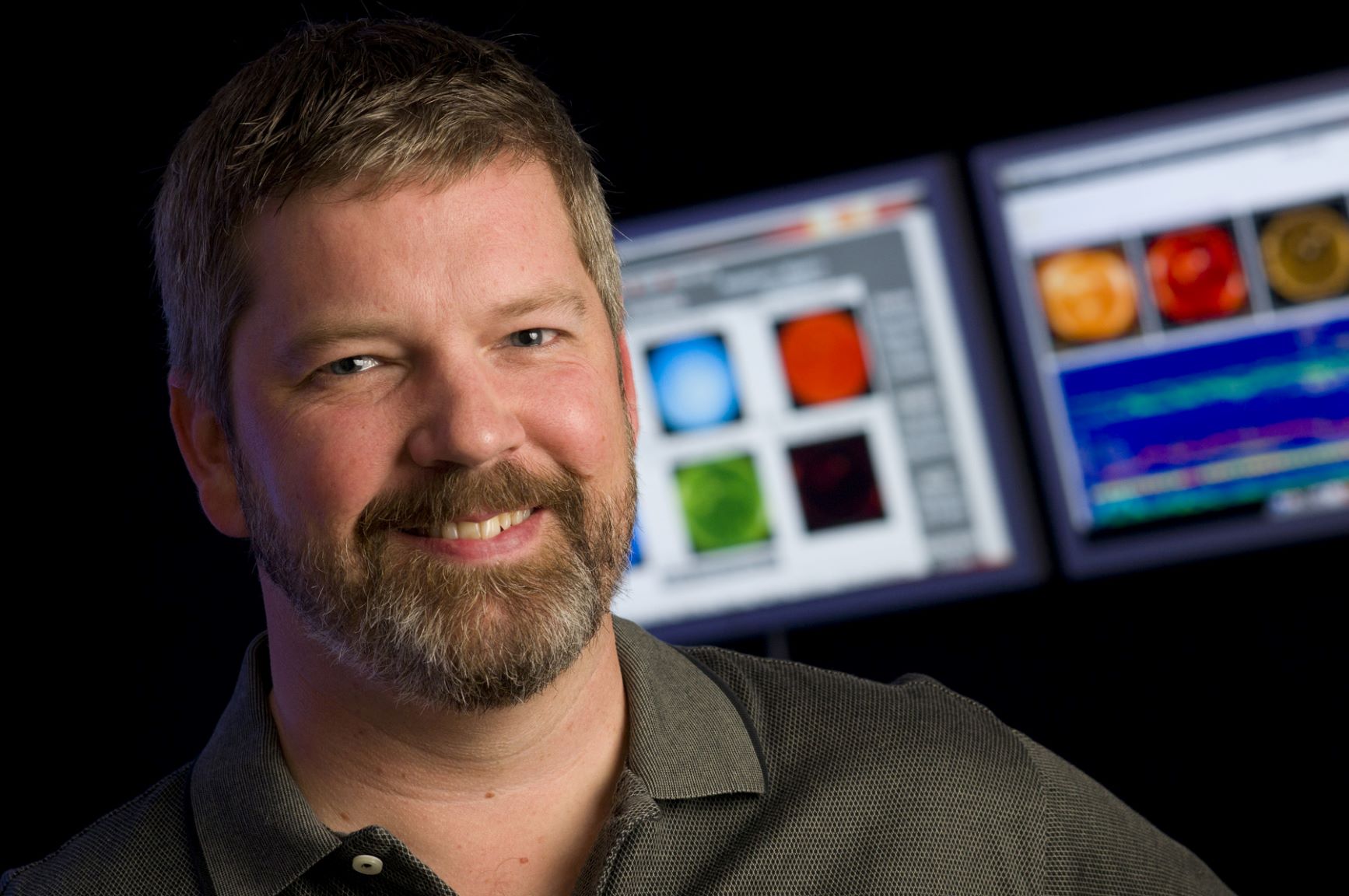
Marshall Researcher Gives University of Central Florida’s (UCF’s) Physics Department Colloquium
On March 6, 2020, Dr. Heidi Haviland was invited to give the University of Central Florida Physics department colloquium seminar on her research. Her talk was entitled, “A multi model electromagnetic sounding investigation of the lunar interior”. This research talk provided an in-depth discussion on the current state of knowledge of the lunar interior and the methods she is currently using to learn more. This presentation appeared to be well received by the audience. Due to the travel restrictions surrounding the COVID-19 virus, this talk was given remotely as NASA scientists like Dr. Haviland find new ways to pursue research, continue with their projects, and collaborate with their colleagues.
ESCAPE SMEX Proposal Selected for Phase A Study
On March 6, 2020, NASA Astrophysics Division announced the selection of Extreme-UV Stellar Characterization for Atmospheric Physics and Evolution (ESCAPE) for a Phase A study. The Principal Investigator (PI) is Professor Kevin France. Marshall’s Heliophysics and Planetary Science Branch, ST13, provides the Institutional PI (Dr. David McKenzie) and science support, and the mirror production is performed through the ST12-ES34 partnership, with support provided by multiple other branches within Marshall Space Flight Center. Partnering institutions include the Smithsonian Astrophysical Observatory (SAO), Southwest Research Institute (SwRI), Pennsylvania State University (PSU), and University of Colorado in Boulder (UCB), plus a number of Science Co-Is at other institutions. ESCAPE’s science focus is on the habitability of exoplanets orbiting hot (F-type) through cool (M-type) dwarf stars. Marshall’s role in the Small Explorer (SMEX) mission will be to provide the mirror shells, coat the shells, and mount and align them into flight-ready modules.
Hi-C 2.1 Instrument Paper Accepted for Publication and Flight Featured on NASA TV Video
The instrument paper for the most recent Hi-C sounding rocket flight, has been accepted for publication in Solar Physics. The article describes the telescope, electrical systems, and data taken during the flight. It is the primary reference paper for the Hi-C 2.1 mission. The ST13 authors include Laurel Rachmeler as the first author, Amy Winebarger, Sabrina Savage, Ken Kobayashi, David McKenzie, Genevieve Vigil, and Christian Bethge. Engineers from ES, EV, and non-NASA institution engineers and science team members are also included in the author list.
NASA TV has produced a one-hour video on Sounding Rockets. Dr. Amy Winebarger was interviewed for this production and a clip about the first Hi-C launch is included in the video. The video can be found at the link below.
The clip on Hi-C is roughly 12:30 minutes into the video.
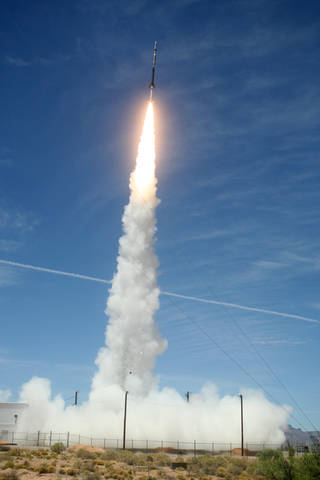
In other sounding rocket news, David McKenzie from Marshall’s Heliophysics and Planetary Science Branch (ST13) was the guest speaker for the Von Braun Astronomical Society (VBAS) on January 17, 2020. Dr. McKenzie introduced an audience of VBAS members and guests of all ages to the NASA Sounding Rocket Program, heliophysics research and technology development at MSFC, and pioneering results from MSFC rocket missions.
Lunar Geophysical Network (LGN) Selected for Planetary Mission Concept Study
NASA has started preparations for the 2023 Planetary Science Decadal Survey and one of the tasks of the Decadal Committee will be to recommend a portfolio of planetary science missions. The Lunar Geophysical Network (LGN) was one of 11 missions selected for study (and one of 3 focused on the Moon). Marshall Space Flight Center (MSFC) hosted the most recent LGN Mission Team Meeting in support of the HQ-funded planetary mission concept study. MSFC Chief Scientist Dr. Renee Weber serves as Deputy PI of the effort, under Dr. Clive Neal of the University of Notre Dame. Dr. Heidi Haviland (Heliophysics and Planetary Science Branch) participated on the Electromagnetic branch of the mission. Dr. Francesco Civilini (USRA) and Ms. Deanna Phillips (UAH) also participated in the meeting. The attendees (25 total) included science and instrument team members, as well as representation from the GSFC mission concept study engineering design team. Two team members were also a part of the Apollo science team, Drs. Yosio Nakamura (UTIG), “Mr. Moonquake”, and Douglas Currie (UMD).
The main goal of the LGN mission is to understand early/initial terrestrial planet evolution through defining the global interior structure and composition of the Moon. Secondary goals include understanding the origin(s) and locations of the shallow moonquakes (the largest events recorded by the Apollo instruments to assist in the location of surface assets away from such areas), to define the current impact flux on the Moon, and characterize the plasma surface environment. The purpose of the concept study is to examine and optimize features of the LGN mission design such as packaging, deployments, power, and geographical, or selenographical, distribution of landers. As the science case and measurement requirements for LGN are already well-established in the current Planetary Decadal Survey, this mission concept study primarily focuses on the assessment of system and subsystem concepts, requirements and trade-offs, costing and risk estimates, and the identification of areas for technology development investment in support of LGN.
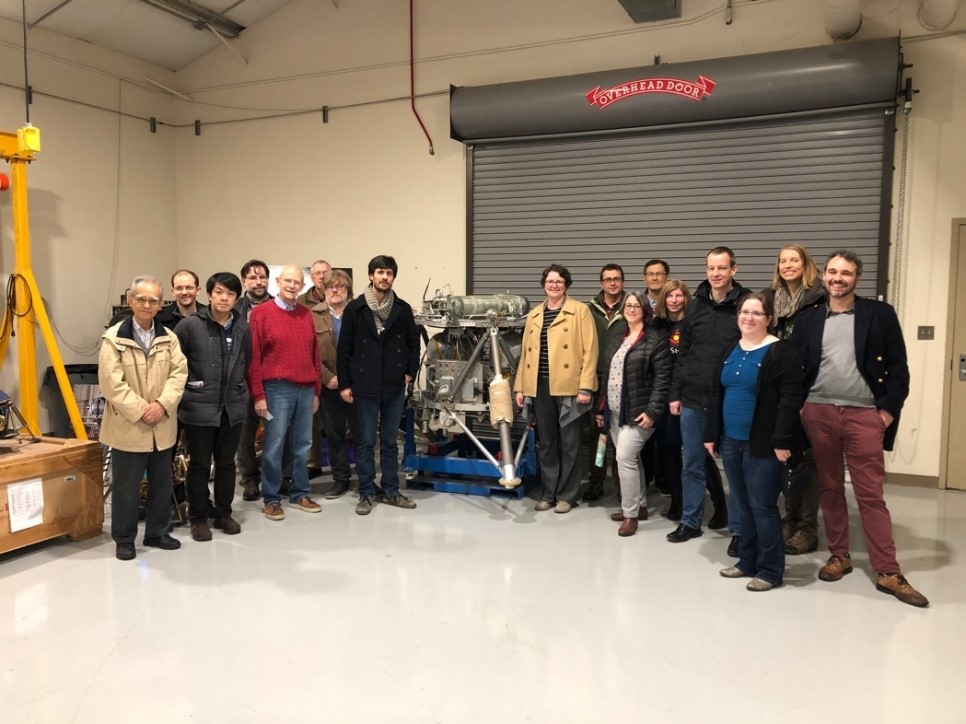
“Crustal and Time-Varying Magnetics Fields at the Insight Landing Site on Mars” Article Published
The article was published in the Springer Nature Journal, Nature Geoscience, as part of a special collection, “Insight at Mars.” This collection highlights key advances in Martian interior and surface science with the landing of and new observations from the InSight (Interior exploration using Seismic Investigations, Geodesy and Heat Transport) mission. This manuscript is led by Dr. Catherine Johnson (Univ. British Columbia-UBC, PSI) with collaborators that include Marshall Scientist, Heidi Haviland. The initial results of the magnetic field at the InSight landing site are presented. Researchers find that the crustal magnetic at the surface is ten times stronger than predictions derived from satellite observations. Magnetized rock are likely beneath the surface and indicative of a past dynamo of Earth-like field strength. Scientists measured signals with contributions from the ionosphere at altitudes 120-180 km and above. Future work will be able to sound the interior to constrain electrical conductivity of the interior of the InSight landing site region.
The InSight manuscript collection is available at: https://www.nature.com/collections/iiiifgehfc.
Excellent data from CLASP2 mission matches the theoretical model.
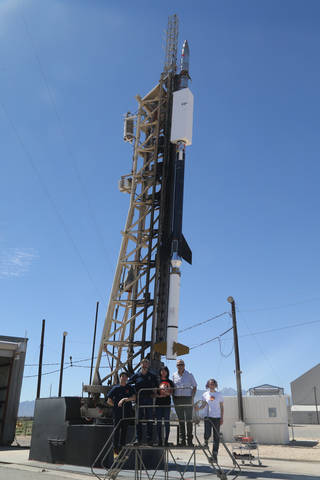
On April 11, 2019, the NASA Chromospheric Layer Spectropolarimeter-2, or CLASP2, sounding rocket mission was successfully launched from the White Sands Missile Range in New Mexico. The payload was recovered in good condition and the science team behind the mission were happy with the results. In November, the CLASP2 team convened the first post-flight "CLASP2 Science Meeting" at the Instituto de Astrofisica de Canarias. Approximately 25 CLASP2 team members attended, representing 7 countries. The team reviewed the status of data calibrations, progress towards releasing data, paper manuscripts in progress, and concepts for future observations. In the words of Principal Investigator, David McKenzie (MSFC, ST13), "The science results from CLASP2 are turning out to be exactly what we promised in the proposal."
CLASP2 is a follow-on mission to CLASP, which gave scientists the first-ever polarization measurements of ultraviolet light emitted from the Sun's chromosphere. CLASP measured the intensity and linear polarization of the hydrogen Lyman-alpha emission line. Hydrogen Lyman-alpha is sensitive to the magnetic field through the Hanle effect which affects the linear polarization, but not circular polarization.
For CLASP2, the team re-coated the mirror to change the wavelength range. CLASP2 also measured both linear and circular polarization, which can be used in combination to calculate the full magnetic field vector. There are two primary spectral lines in the wavelength range of CLASP2, Mg 11 h & k, which have different sensitivities to the magnetic field, but are produced at the same altitude n the Sun's atmosphere. One of the important results of CLASP is that having multiple lines (with different magnetic sensitivities) makes interpreting the field and calibrating the data easier. CLASP2 used this lesson when choosing the new wavelength range; Mg II h & k, and several other lines are present in the CLASP2 data. Additionally, the magnesium lines are sensitive not only to the Hanle effect, but also the Zeeman effect, which affects the circular polarization and further aids in the determination of the field vector.
CLASP2, with its remarkably steady pointing system, also had a different solar target. CLASP was pointed at a quiet area on the Sun, while CLASP2 was first pointed at the active Sun, with its stronger magnetic field, and then at a quiet Sun area. Each area was observed for 2 1/2 minutes. The quiet area of the Sun being measured was similar to that observed by CLASP. All 3 cameras on CLASP2 worked as planned. The instrument recorded 3000 spectra in less than 6 minutes and the team obtained excellent data. The CLASP2 team was able to: obtain linear and circular polarization measurements, utilize multiple lines with different magnetic sensitivities, confirm models of the chromospheric scattering process, and obtain information on the chromosphere's magnetic field.
In the image below we can see an overview of the 3 targets for CLASP2: Sun center, plage (strong field), and limb (quiet Sun). The images are from the slit-jaw context camera. The lines show the location of the slit. Spectra and polarization are measured along the slit.
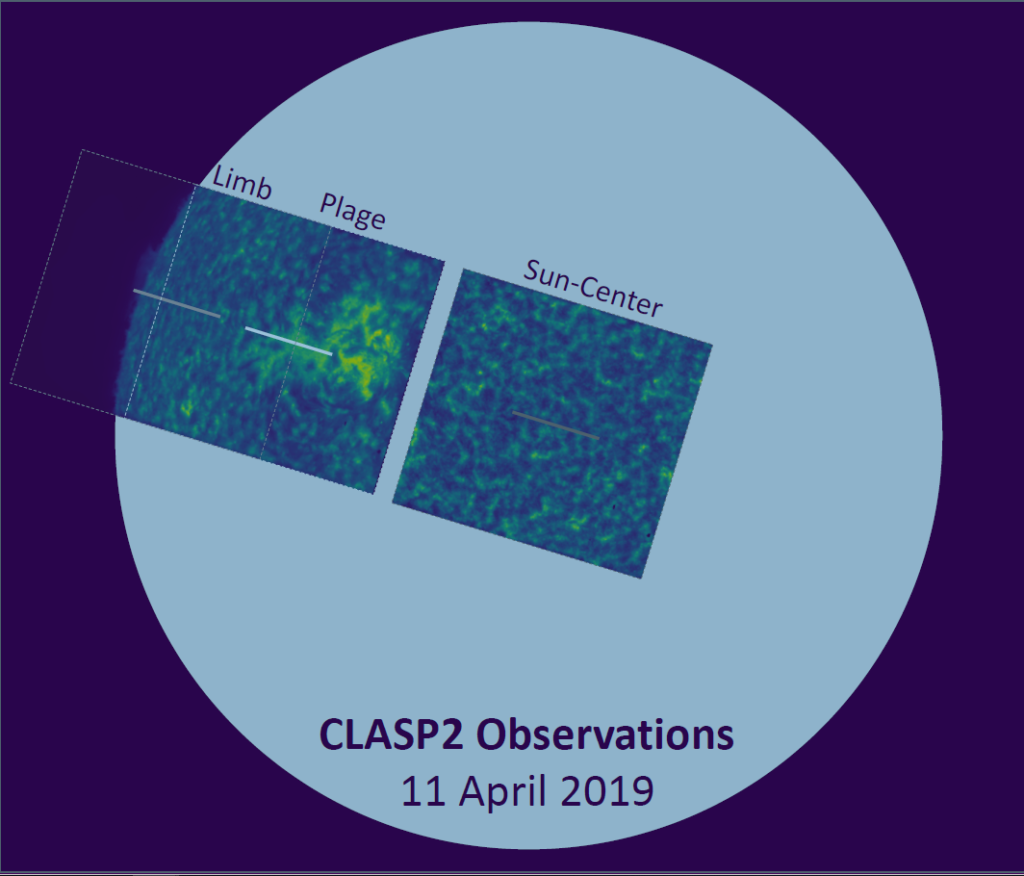
Interpreting this data is not straightforward. Circular polarization can easily be converted to a magnetic field strength along the line of sight, but is insensitive to the rest of the field vector. Linear polarization is sensitive to the rest of the vector, but that signal is modified by the magnetic field, the plasma properties (density, temperature, etc.) and the viewing angle. Together the team aims to combine these two measurements to determine the full field vector. To do that, the CLASP2 team include theorists that model the processes that occur in the Sun's atmosphere. Comparison of the observational data with the numerical simulations provides a powerful technique for understanding the conditions that lead to the resulting measurements. in the case of CLASP2, the theoretical model predicted very little polarization in the h line and very strong signals in the k line. The data results matched the model, including some features that are entirely dependent on the strength of the magnetic field. Work is ongoing to extract the full magnetic field vector from the CLASP2 measurements.
The long-term goal is to use these new measurements as a pathfinder to find a way to make magnetic measurements in the chromosphere on a regular basis and that can be interpretable. CLASP and CLASP2 data show the validity of planning a larger scale, satellite mission and the need to probe various wavelengths to see what wavelengths and measurements we should use on that satellite.
In addition to the excellent data, the quality of the CLASP2 product from the team of engineers was outstanding. The mission has significant hardware contributions from both MSFC and our international partners in Japan and France, which is rare for MSFC projects. The CLASP2 team worked the project through the government furlough and was successful due to exceptional support from everyone involved.
Data are being calibrated for formal release in the next few months.
Progress on Gateway
Gateway, a moon-orbiting space station, is a key element to NASA's Artemis program. Dr. Debra Needham (supporting Chief Exploration Scientist, Dr. Jake Bleacher) attended and helped coordinate the Gateway Utilization Coordination Panel (GUCP) during which NASA and international partners discussed science objectives and approaches to payload selection for early-stage Gateway Utilization opportunities. Following the GUCP Panel held at Johnson Space Center in Houston, Dr. Needham helped coordinate the Gateway Payload Working Group (GPWG) during which cross-disciplinary NASA internal representatives from SMD, Space Life and Physical Science Research and Applications (SLPSRA), and Human Research Program (HRP) met to debrief on the GUCP and to discuss NASA's position on Gateway science objectives and approaches to payload selection for early Gateway Utilization opportunities, for continued discussions with international partners. These discussions are ongoing and are important steps to advancing and sustaining human space exploration goals.
For more information and updates on Gateway, click on this link: https://www.nasa.gov/topics/moon-to-mars/lunar-gateway.
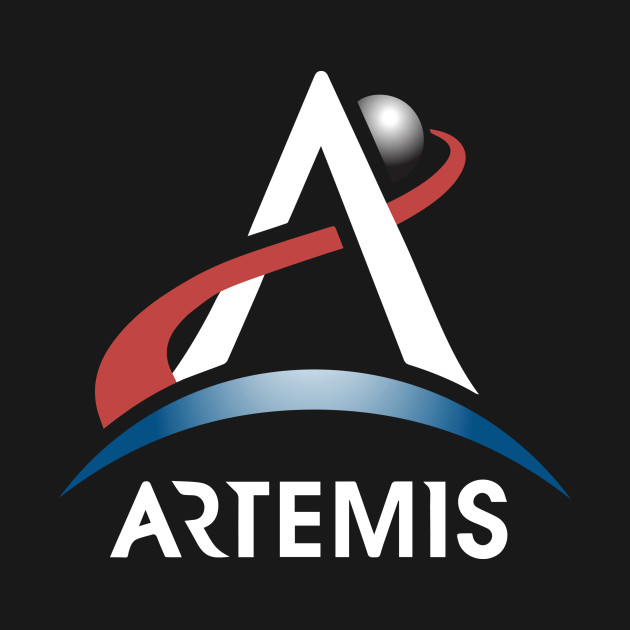
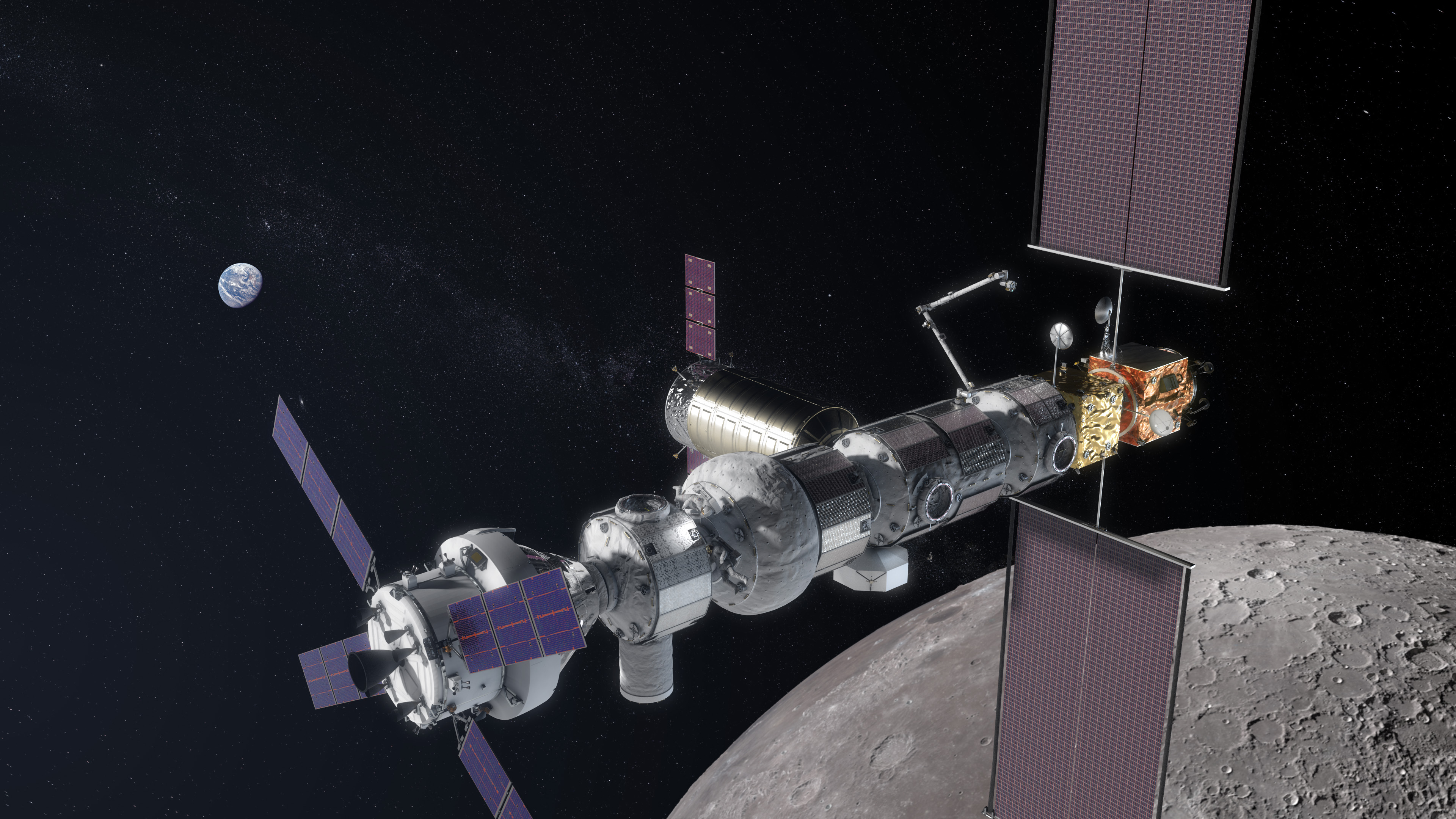
Dr. Renee Weber Appointed as New Marshall Chief Scientist
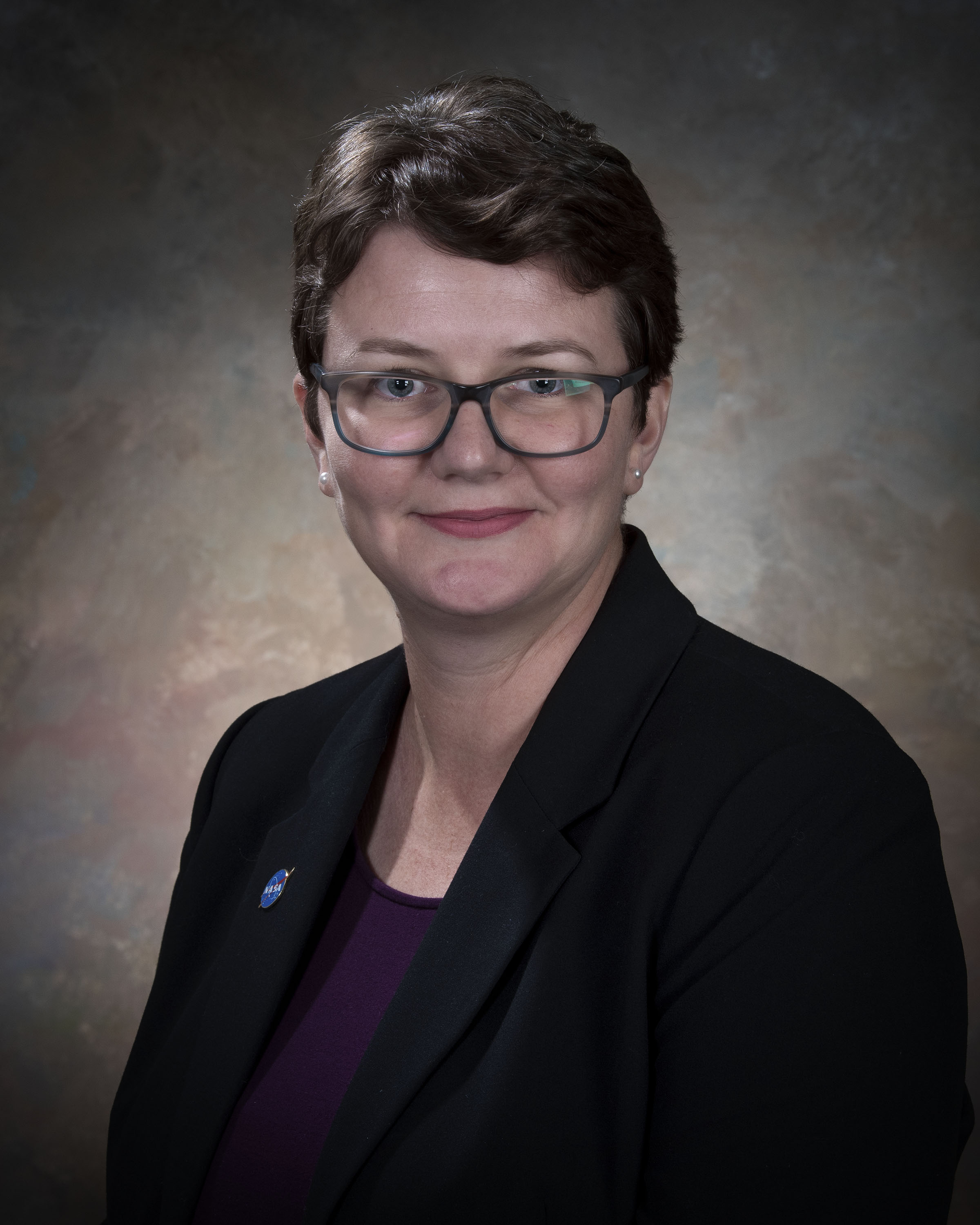
Congratulations to Dr. Renee Weber on her appointment as Chief Scientist for Marshall Space Flight Center! Dr. Weber is a planetary scientist and has been Marshall's Heliophysics and Planetary Science Branch Chief for several years. Her exceptional research on the interior geologic structure of the moon and seismic activity on the Moon and Mars, including analysis of Apollo seismic data, is directly relevant to human exploration of the Moon and Mars. She is currently a Co-Investigator and seismology science team member on the Mars InSight mission and is also serving as the Deputy Principal Investigator of the recently selected Lunar Geophysical Network Planetary Mission Concept Study for NASA's New Frontiers 5 program. Her leadership on two other NASA-funded planetary seismometer development projects also supports work on the Lunar Geophysical Network. While her colleagues will miss her leadership and enthusiasm as Heliophysics and Planetary Science Branch Chief, we are excited about her new role as Marshall's Chief Scientist.
Space Weather Data Mining Partnership with Brazil
Dr. Linda Krause, Project Scientist of the joint US-Brazil Scintillation Prediction Observation Research Task (SPORT) satellite mission, has advanced the collegial relationship between MSFC and the Brazilian Instituto Tecnologico de Aeronautica (ITA; aka Aeronautics Institute of Technology) by codifying a new space weather data mining project to be conducted in conjunction with the science objectives of the SPORT mission.
When fully funded, the project team, which includes ST13's Drs. David Falconer, Ghee Fry, and Heidi Haviland, will mine space weather data spanning two solar cycles (23 and 24) to improve the climatology of the ionosphere during local sunrise and sunset hours. This local time domain is where the ionosphere is both the most unpredictable (even when the ionosphere is quiescent) and the most sensitive to space weather storm perturbations.
The present study will use over 25 years' worth of solar, solar wind, geomagnetic, and ionospheric data along with mathematically sophisticated data mining and analysis techniques to 1) establish two generalized space weather parameters (i.e., solar and geomagnetic) to quantify their respective impacts on ionospheric states, per Krause et al. 2011, and subsequently being used as a tool to establish pattern-based hypotheses, 2) using those hypotheses to train a probabilistic model of ionospheric electron density profiles during twilight hours at ionosonde sites, where observational data can be used to validate the model, and 3) using physics-based models for confirmatory data analysis of the statistical hypotheses and how they relate to physics-based processes associated with the solar, geomagnetic, and ionosphere states. The physics-based models include the Banks-Nagy-Solomon two-stream electron transport code and the SAMI-2 is another model of the ionosphere (SAMI-2) code. ITA Collaborators Drs. Marco Aridenti and Jonas Sousasantos bring invaluable expertise tot he project in the form of machine learning techniques and SAMI-2 modeling, respectively.
The ultimate goal of this project is to use space environment state files as initial and boundary conditions to drive the SAMI-2 model to predict equatorial plasma bubbles known to cause ionospheric scintillation - the primary mission objective of the joint US-Brazil SPORT satellite mission.
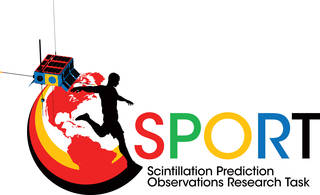
Highlights from the Lunar Exploration and Analysis Group Annual Meeting (LEAG)
Drs., Debra Needham, Renee Weber, Heidi Haviland (ST13/Weber), and Ms. Deanna Philips (UAH) attended the LEAG annual meeting in Washington D.C. where Ms. Philips was awarded the Dr. B. Ray Hawke Next Lunar Generation Career Development travel award. Through the meeting, a review of the planetary science decadal survey and assessment of the community's current priorities for the next decade was discussed. Multiple groups recommended the Lunar Geophysical Network and a distributed Sample Return missions as the top two priorities for the upcoming decadal survey.
Dr. Needham co-chaired the "Planetary Formation" decadal survey breakout discussion group and served on a live at LEAG virtual panel for the public led by Mr. Andy Shaner (LPI). Mr. Steve Clarke (NASA Deputy AA for Exploration, SMD and the Lunar Discovery and Exploration Program Lead, LDEP) gave an update on the CLPS mission and upcoming opportunities for payloads, including the announcement of a new polar resource rover mission called VIPER to launch in 2022.
Dr. Greg Chavers (MSFC/HLS) gave an overview of the current capabilities of the Human Landing Systems program with Ms.Lisa Watson-Morgan in attendance. Ms Niki Werkheiser (STMD, LSII lead) discussed the goals of the Lunar Surface Innovation Initiative, in terms of opportunities for tech development in support of living and exploring on the lunar surface. Dr. Weber co-chaired the "Return to the Moon II: Partners to get us there" session.
Updates from commercial lunar lander services, vendors, and representatives from NASA SMD (Dr. Sarah Noble), STMD (Mr. Andrew Petro), and HEOMD (Dr. Jake Bleacher) also discussed their top priorities and intersections with lunar science. Dr. Weber presented "Tilt-Insensitive Optical Seismometer for the Lunar Geophysical Network" and Dr. Haviland presented "Neutron Measurement System at the Lunar Surface (NMS-Lunar)". Dr. Weber also co-authored a presentation on the "Lunar Geophysical Network" and Dr. Needham spoke on the "Science at the Moon" panel in the session "The Moon in the 2020s: Beyond Artemis-3".
The meeting occurred October 28-30, 2019, with more information at the following location: https://www.hou.usra.edu/meetings/leag2019/.
A discussion of white papers summarizing the communities' top priority science is ongoing: Link here to sign up.
The new graphic below from NASA summarizes the meeting well with an Artemis astronaut deploying geophones on the lunar surface.
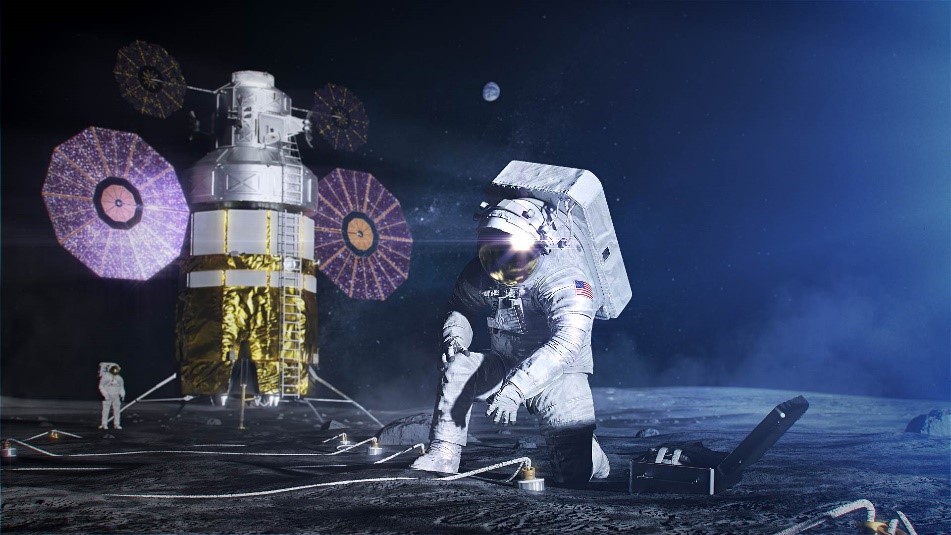
Calibrated data from the High-Resolution Coronal Imager's (Hi-C 2.1) launch now available.
The third flight of the High-Resolution Coronal Imager, or Hi-C 2.1, launched successfully from White Sands Missile Range in New Mexico on May 29, 2018. The goal of the mission was to observe the cool corona in high resolution in coordination with multiple ground and space based telescopes to enhance our knowledge about mass and energy coupling between the chromosphere and the corona. Specifically, the flight was designed to study two questions: are there coronal counterparts to type II spicules; and what is the relationship between chromospheric and coronal heating in active region cores? The Sun cooperated on this mission, presenting a perfect active region near the center of the solar disk, which was needed to address the science question. The full set of calibrated data and users guide are being made available on the Virtual Solar Observatory (VSO) and the MSFC Hi-C websites. The team's mission paper The High-Resolution Coronal Imager, Flight 2.1, is also available online and provides details about the data set and instrument (see links below).
During the five-minute flight, Hi-C 2.1 targeted Active Region 12712 and captured 78 images at a cadence of 4.4 seconds. The instrument was modified from the original configuration of Hi-C 1 to observe the solar corona in a cooler passband peaking near 172 A and uses a new, MSFC-built, low-noise camera. The flight has provided us with the highest spatial and temporal resolution data of the cool solar corona and transition region ever taken at this wavelength. By coordinating the flight with other solar mission observations, we were able to trace the time evolution of plasma temperature in both the corona and the transition region. The high temporal and spatial resolution allows us to follow the evolution of small features. The cooler temperatures target the base of the corona, allowing the data to be combined with co-observations, particularly the Interface Region Imaging Spectrograph (IRIS), to study the connection between the chromosphere and the corona.
The first Hi-C launch captured the highest spatial resolution and cadence images of the extreme ultraviolet solar corona of an active region ever achieved and gave us the first ever observations of coronal braiding and associated magnetic energy release. This first flight has generated more than 25 refereed publications so far. A second flight, Hi-C 2.0 suffered an electric short in the shutter wire, preventing the camera shutter from operating during flight. A detailed analysis into this anomaly resulted in finding the fault and detailing the lessons learned, which then resulted in minor modifications in process and hardware for the successful flight of Hi-C 2.1, only two years later. Hi-C 2.1 is the first heliophysics sounding rocket mission where the Principal Investigator, Principal Scientist, and Instrument Scientist were all women.
Hi-C 2.1 has provided the highest resolution data of the cool corona and transition area of the Sun to date and now that data is available online. Already, at least five papers based on Hi-C 2.1 have been prepared for submission to scientific journals. The full set of calibrated data is online now at the VSO site. The paper providing instrument details and the steps taken to process the data has also been released online. Click on the links below to view them.
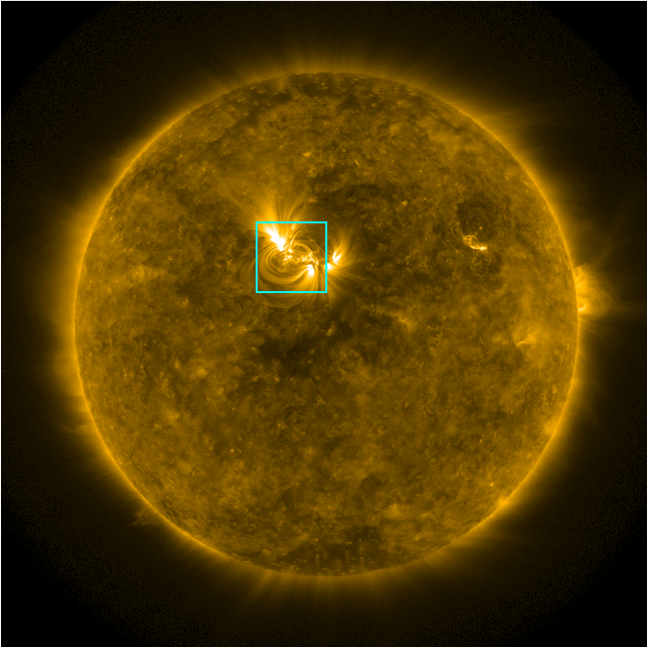
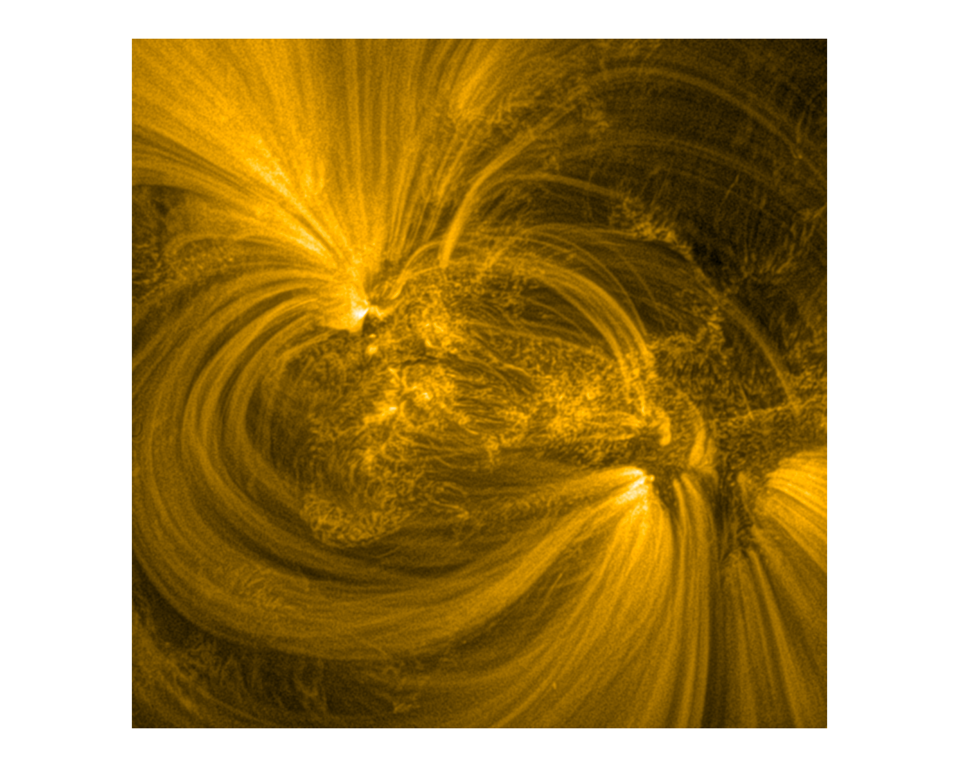
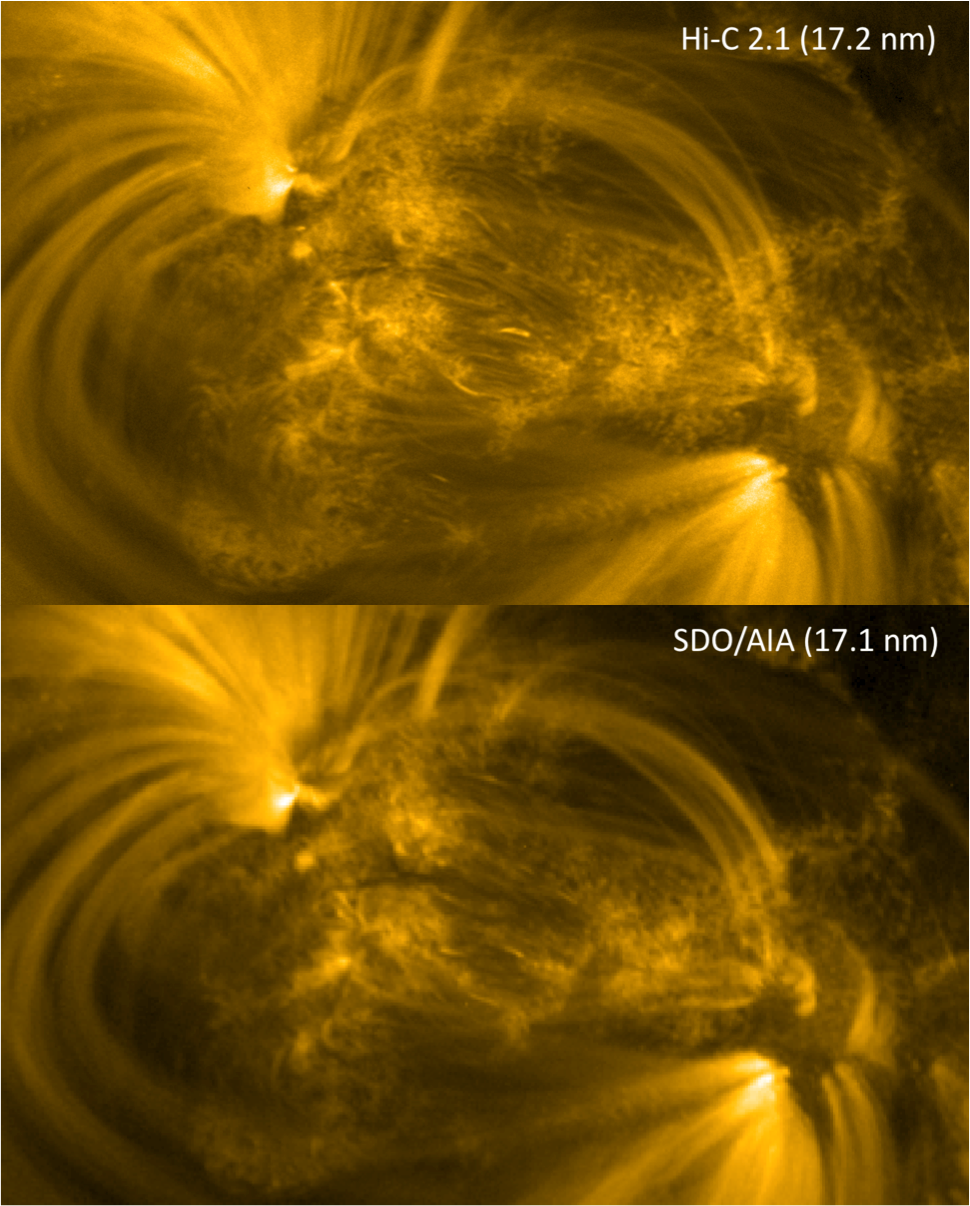
The mission team paper, "The High-Resolution Coronal Imager, Flight 2.1", can be found at https://ui.adsabs.harvard.edu/abs/2019arXiv190905942R/abstract
The instrument paper for HI-C 2.1 is available at https://link.springer.com/article/10.1007/s11207-019-1551-2
For VSO source details, Hi-C 2.1, go to https://msfc.virtualsolar.org/Hi-C2.1.
To view Hi-C data products, go to https://hic.msfc.nasa.gov/data_products.html.
To view the Hi-C user guides, go to https://hic.msfc.nasa.gov/data_analysis.html.
For general information about Hi-C 1 and Hi-C 2.1, go to https://hic.msfc.nasa.gov/.
Solar Cruiser technology demonstration proposal selected for funding.
The “Kon-Tiki” mission proposal, submitted to NASA’s Heliophysics Division in response to the SALMON-3 Technology Demonstration Mission of Opportunity AO, was selected for a Phase A study. The mission, renamed “Solar Cruiser” after selection, comprises a 1,666 m2 solar sail demonstration (led by Marshall and partnering with Roccor) and a compact polarimetric coronagraph built by the High Altitude Observatory.
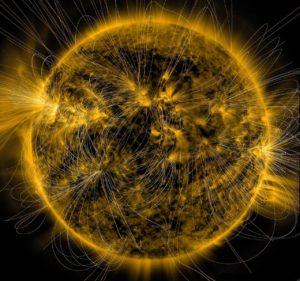
Both the sail and the coronagraph incorporate new technologies that will blaze a trail for transformative exploration of the solar system and heliosphere. the solar sail will demonstrate the ability to sue solar radiation as a propulsion system which could provide views of the sun not easily accessible with current technology. The coronagraph instrument would enable simultaneous measurements of the Sun's magnetic field structure and velocity of coronal mass ejections, or CMEs. These giant explosions of solar material are ejected into space and can set off space weather storms that may interfere with utility grids on Earth, the operation of orbiting spacecraft, and human exploration of the Earth-Moon-Mars system. Improving data-gathering technology in this area is particularly useful for advance warning systems for at-risk infrastructure.
The Principal Investigator of Solar Cruiser is Mr. Les Johnson and the Marshall Science team includes Drs. David McKenzie, Laurel Rachmeler, Christian Bethge, and Sabrina Savage.
NASA Administrator Bridenstine views successful lunar regolith experiments.
Members of the planetary science group in the Heliophysics and Planetary Science Branch (ST13) partnered with the lander team, and a host of helpful supporters across the Center, to plan and execute a field campaign in Marshall’s lunar regolith testbed (part of the West Test Area) on August 14th, 2019. Three primary experiments were performed: 1) Deployment of lander-integrated strain sensors (mounted on the foot-pads) for shallow structure determination, including mapping the presence of buried obstacles; 2) Deployment of a line of geophones for regional structure determination, testing both deployed and lander-mounted configurations, and 3) Deployment of a broadband seismometer (similar to InSight’s Seismic Experiment for Interior Structure - SEIS instrument) for global structure determination. All three experiments were successful and the team is currently processing the results.
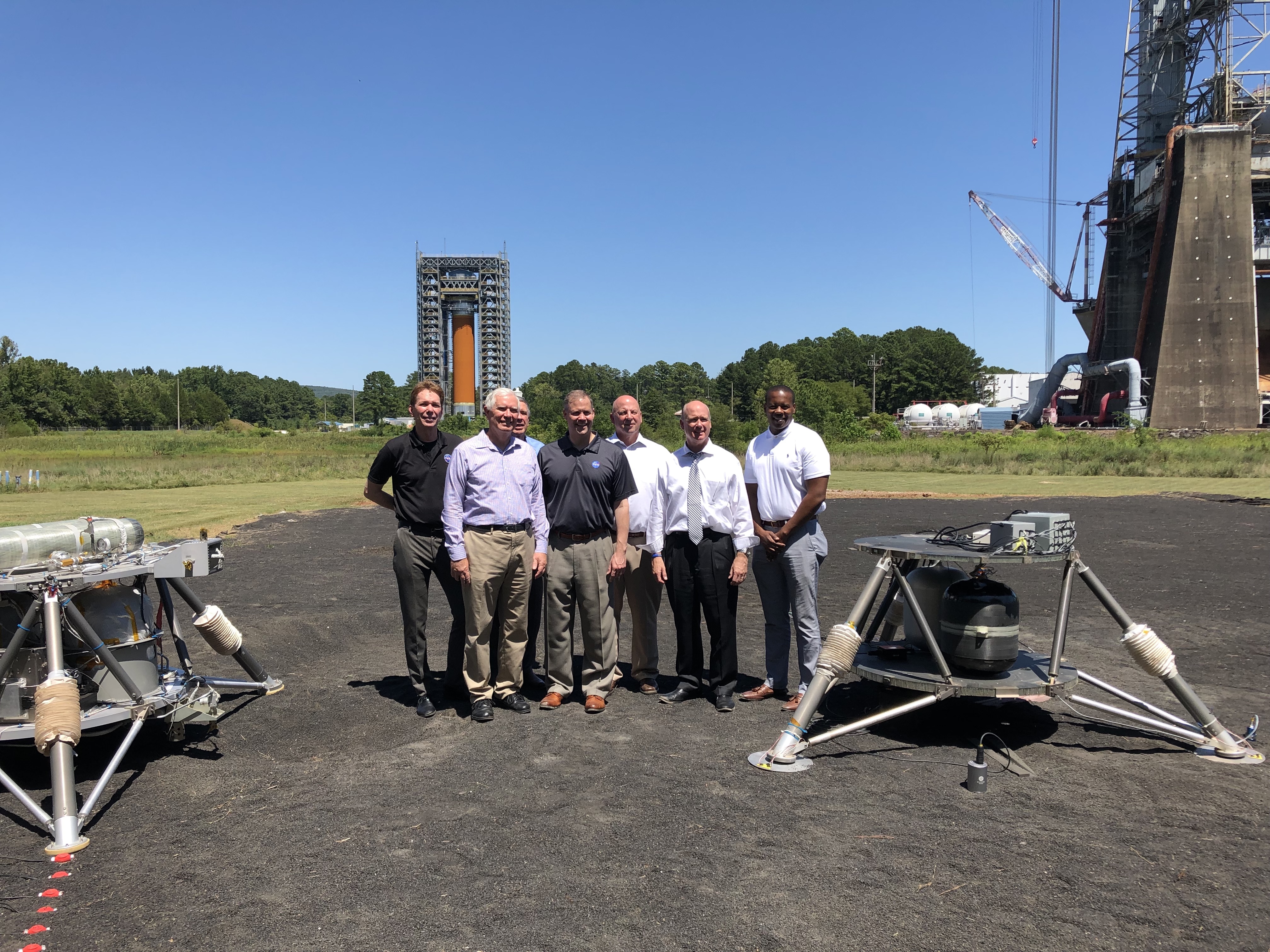
The experiment was then re-deployed on Friday, August 16th and served as a tour stop during NASA Administrator Jim Bridenstine's visit. Many other stakeholders including Representative Mo Brooks (AL 5th), Representative Robert Aderholt (AL 4th), and Representative Scott DesJarlais (TN 4th) were also in attendance. The Administrator's visit focused on communicating MSFC lunar science goals while simultaneously demonstrating direct utility to the Artemis human exploration program.
Jezero Crater Chosen as Mars 2020 Rover Landing Site
After five years of analysis and debate, Jezero Crater has been selected as the landing site for NASA’s Mars 2020 rover mission. Jezero Crater was selected over more than 60 candidate sites primarily due to its identification as an ancient river delta.
A primary goal of the Mars 2020 mission is to search for signs of ancient life on Mars. Ideal conditions for ancient habitability on Mars are areas where water once ponded, forming sediment layers. Dr. Fassett was the first to observe such features in Jezero Crater, identifying a river delta formed billions of years ago on the floor of the ancient lake encircled by the crater walls. Jezero Crater hosts one of the first unambiguous fluvial sediment deposits ever mapped in detail, making it an ideal location to send NASA’s next robotic science mission.
Dr. Fassett’s scientific research focuses on using a combination of remote sensing, geologic mapping, and numerical modeling to better understand planetary surfaces and the geomorphological processes that shape them. He combined observations from the Mars Global Surveyor mission’s Mars Orbiter Camera and Mars Orbiter Laser Altimeter, the Mars Odyssey mission’s Thermal Emission Imaging System, and the Mars Express mission’s High Resolution Stereo Camera to perform integrated characterization of the fluvial system that once transported sediment via regional valley networks to the distributary fan on the crater floor.
Geological analysis of Jezero’s fluvial system, combined with the volume of water necessary to fill the crater, suggests the duration of water flow through this system was prolonged – at least a thousand years. The existence of sedimentary deposits implies that the early Martian environment supported overland flow and ponding of water for an extended period of time. Following Dr. Fassett’s discovery of the Jezero Crater deposits, NASA launched the Mars Reconnaissance Orbiter, which hosts a high-resolution camera and imaging spectrometer. Data from these instruments later revealed the mineralogy of the delta deposits in Jezero Crater, determining that they were likely well suited for the sequestration and preservation of organic material.
Mission scientists believe that the ancient lake-delta system will provide samples of several kinds of rock, clays, and carbonates, some of which have the potential to preserve signs of past life. Jezero Crater has been considered for a landing site on previous missions but the geologic diversity that makes it such an appealing source of scientific data also makes it difficult for the team’s entry, descent, and landing (EDL) engineers to safely land a rover craft there. There are small crater impacts, numerous boulders, rocks, and depressions that could trap a rover.
Fortunately, advances in Mars entry, descent, and landing technologies allowed mission engineers and NASA scientists to consider more geologically rich and challenging sites like Jezero Carter. Among these key advances was the ability to reduce the Mars 2020 landing zone to an area 50% smaller than that considered for NASA’s Curiosity Rover and the development of a new capability called Terrain Relative Navigation (TRN). TRN enables the “sky crane” descent stage which carries the rover down to the surface and helps it avoid dangerous areas.
The Mars 2020 rover mission will search for signs of ancient habitable conditions and past microbial life. In addition, it will gather and store rock and soil samples on the planet's surface, keeping them cached until they can be returned to Earth. This mission and its unique landing site sets the stage for the next decade of Mars exploration.
To learn more about Mars 2020 visit: https://www.nasa.gov/mars2020 and https://www.nasa.gov/mars.
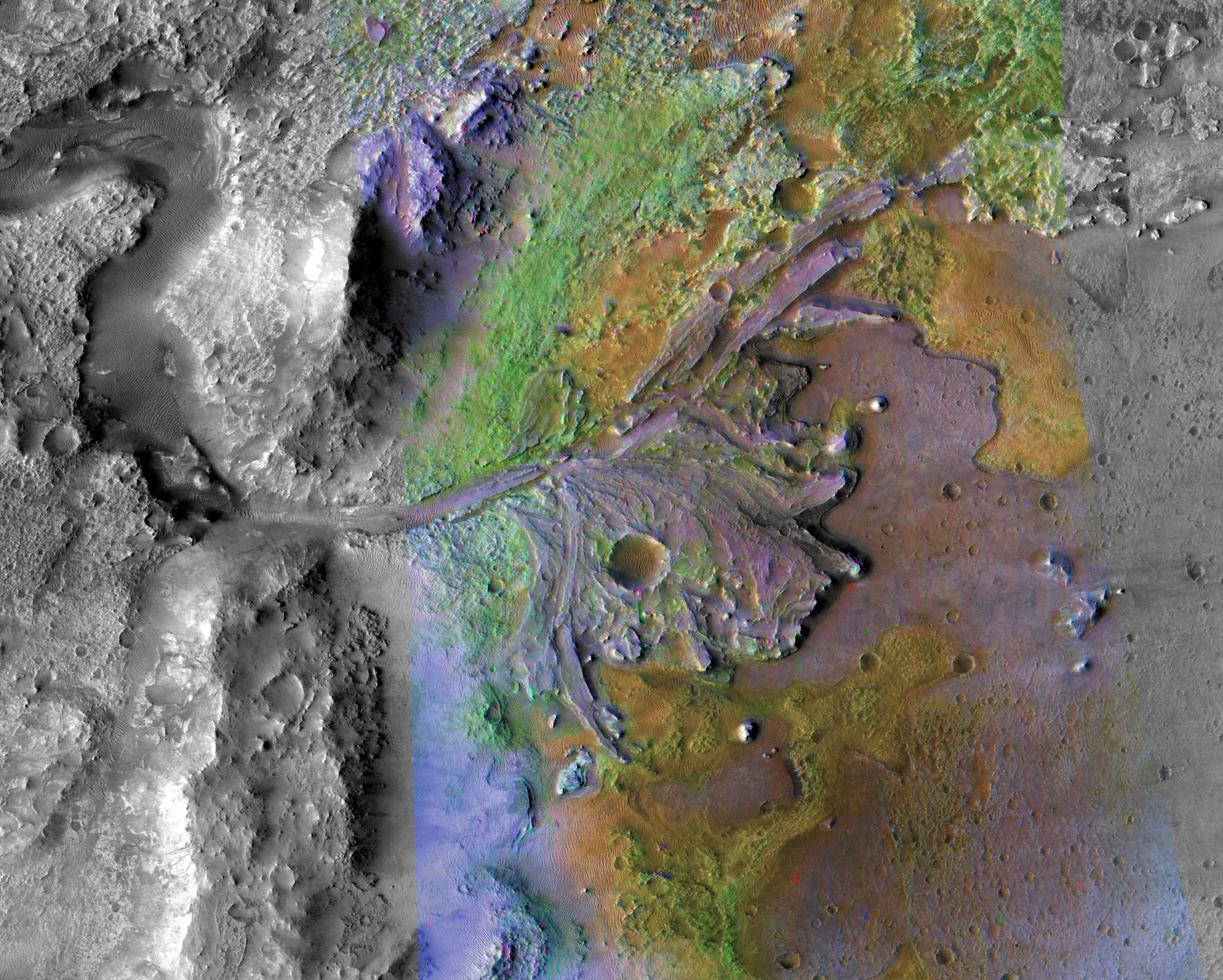
Shrinking Moon May be Generating Moonquakes
The moon is shrinking and may be generating moonquakes. Click on the button below to read the latest data and analysis culled from seismometers on the moon.
CLASP-2: Extreme Rocket Science in the Desert
The NASA Chromospheric Layer Spectropolarimeter-2 (CLASP-2) sounding rocket mission was successfully launched and its payload recovered in good condition. Click on the button below to read more this cutting-edge, Sun-gazing instrument and how it is helping to unlock new clues about how the Sun's energy travels through the atmosphere and into space.